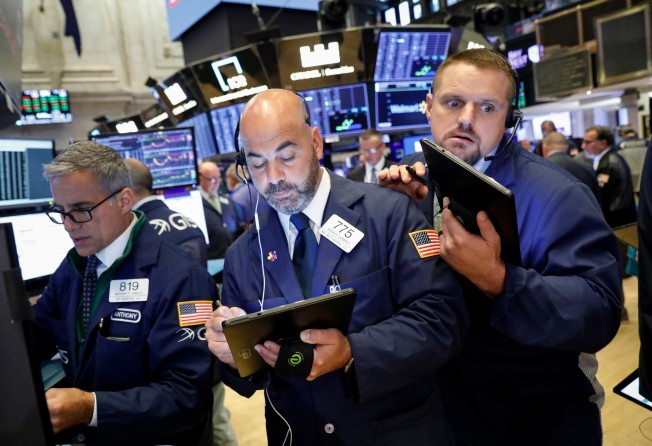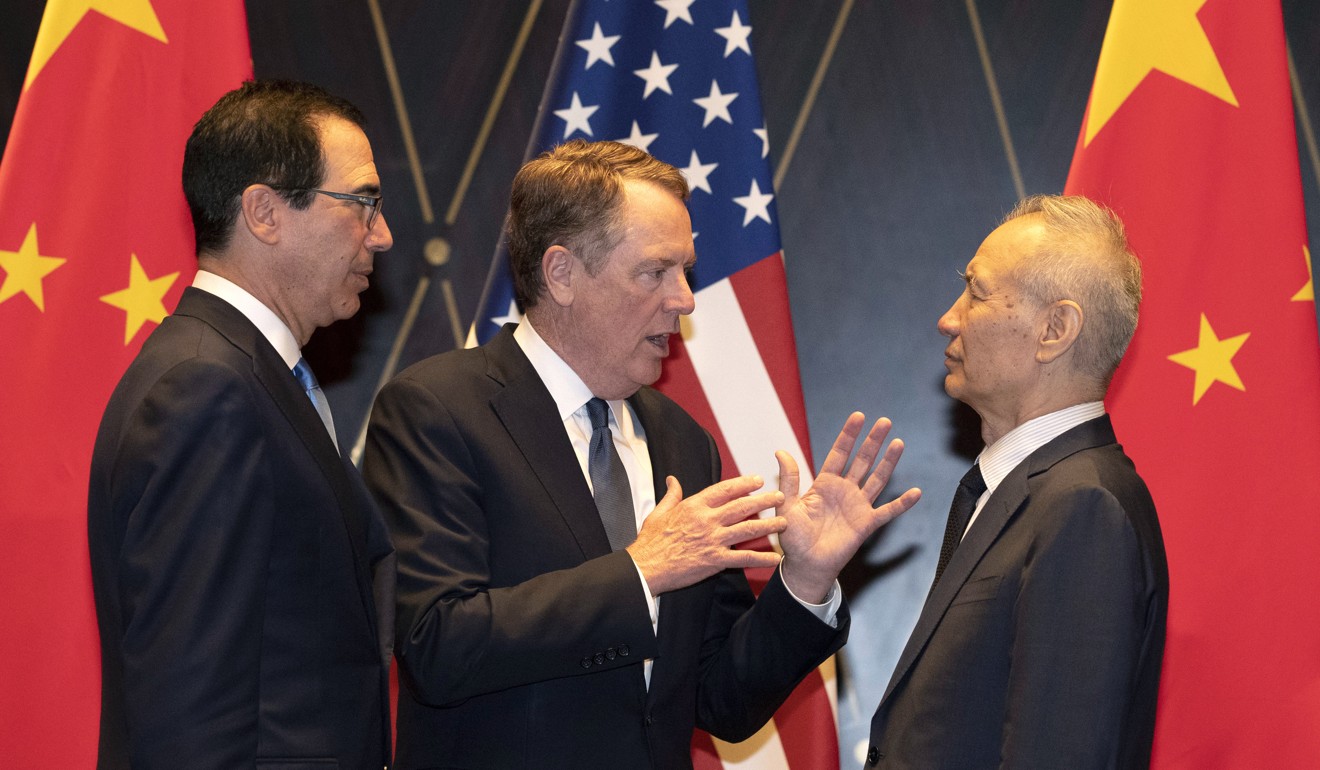US stocks rally on resumed trade talk optimism with China, strong US job numbers
- Dow Jones Industrial Average closed up 1.4 per cent after jumping to a one-month high in morning trading, while the Nasdaq composite and S&P 500 both closed up
- US payrolls surged by 195,000 in August, well above Wall Street estimates

US stocks jumped on Thursday after the US and China announced the two countries would renew trade talks in early October and the US reported strong job numbers.
The Dow Jones Industrial Average closed up 1.4 per cent after jumping more than 450 points, or 1.8 per cent, to a one-month high of 26,836 during morning trading. The Nasdaq composite was up 1.8 per cent, while the S&P 500 index rose 1.3 per cent.
The markets rallied on renewed optimism after China announced on Thursday that trade negotiations with the US would resume in Washington next month, following mid-level discussions in September.
The Office of the US Trade Representative also confirmed on Thursday that a deputy-level meeting would be held in mid-September to “lay the groundwork”.
Chinese Vice-Premier Liu He, US Trade Representative Robert Lighthizer and US Treasury Secretary Steven Mnuchin spoke in their first conversation since August 13.
Stocks with large business exposure to China fared strongly, with Apple rising 2 per cent, and Intel and Qualcomm both logging gains of about 2.4 per cent.
“The trade talk news was a major shot in the arm for the bulls as the Street is laser-focused on this situation,” said Dan Ives, an analyst at investment firm Wedbush Securities in New York.
Also on Thursday, the US announced payrolls surged by 195,000 last month, well above Wall Street estimates, despite growing fears about a looming recession, according to a report from ADP and Moody’s Analytics.
US President Donald Trump tweeted: “Really Good Job Numbers!”

The world’s two largest economies have been battling an escalating trade war since last year, with each side slapping the other with tariffs on billions of dollars’ worth of imports.
The prolonged conflict has weighed on growth for both countries and has started to hurt the global economy.
On Sunday, new tariffs on US$125 billion of Chinese imports, including shoes and smartwatches, took effect after Trump said he was disappointed in China’s tepid effort to buy US farm goods.
China retaliated with duties on US$75 billion of American goods, affecting crude oil.
US markets have been seesawing on the uncertainty and were down in August as tensions increased.
On Thursday, China’s Ministry of Commerce pledged to make substantial progress to resolve the 13-month trade war with the US.

A pause in the trade hostilities would help both nations economically. The US growth rate is expected to dip below 2 per cent next year, according to economists. US manufacturing activity, which Trump had said would benefit from his trade war, contracted in August.
Meanwhile, China is battling its own growth slowdown as high debt levels and market structural challenges rattle its economy.
Earlier this year, Trump administration officials had said the sides were close to a deal, but any promise of a quick end to the trade war faded in May as negotiations hit an impasse.
Without a trade agreement, the US is on track to increase tariffs on US$250 billion of Chinese imports come October.
Another round of 15 per cent tariffs is scheduled for mid-December. That would bring the total amount of goods under punitive tariffs to US$550 billion, effectively the entirety of China’s imports to the US.